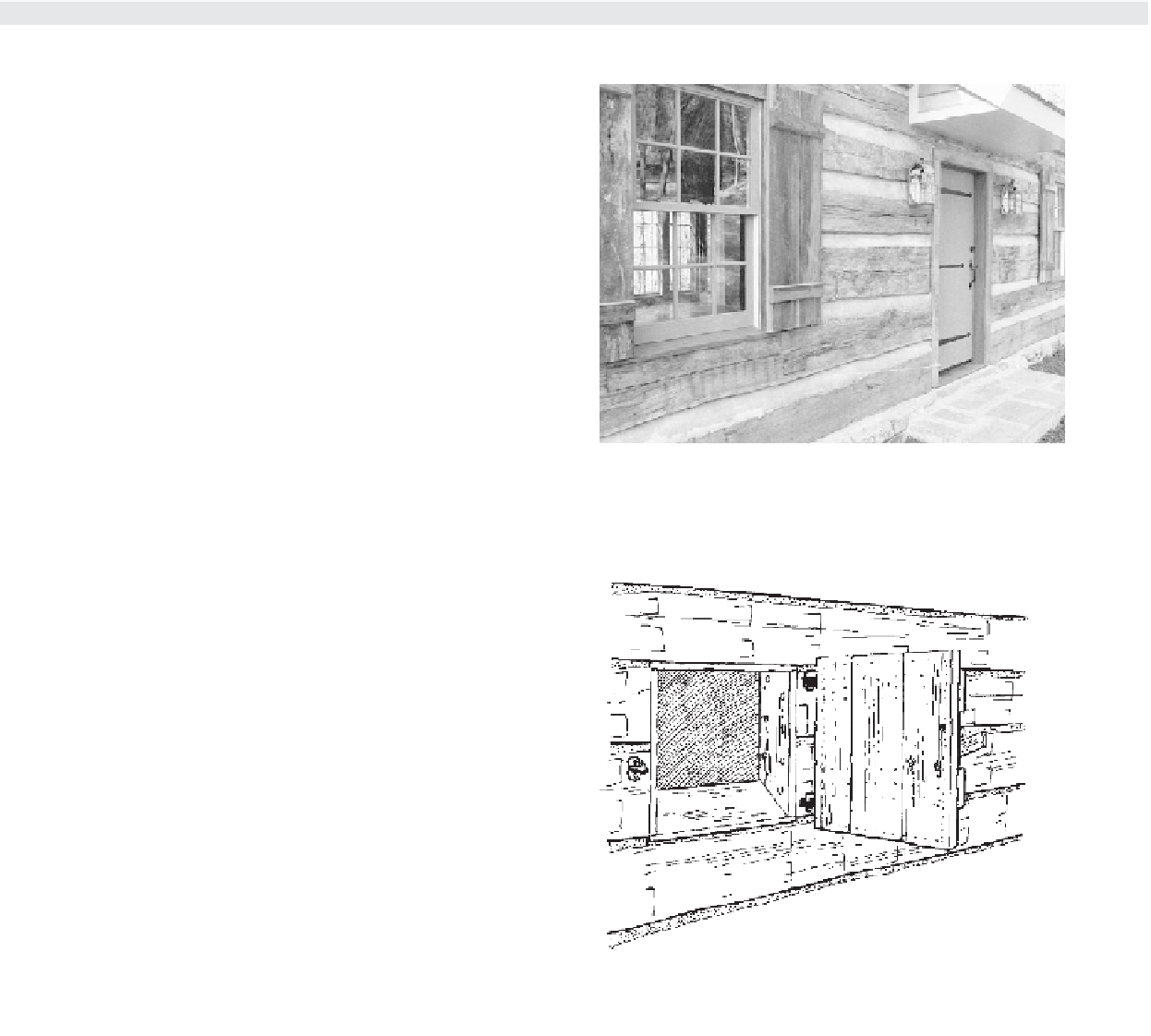Civil Engineering Reference
In-Depth Information
CHAPTER TEN
along with the treasured pieces
of
china, wrapped perhaps in a feather bed to withstand
the jolting of the wagon, was often a pane or two of
glass for the settlers' house. Handblown, wavy, thick,
and so fragile, it traveled west to grace the log house,
and was often removed if the family moved on.
Early Windows
Many cabins were built with no glass. The window
openings were shuttered with split or sawn boards,
leather-hinged, against the cold. I know of one log
house near Gainesville, Missouri, built around 1900
that has only one window with no glass; its shutters
hung on forged-iron hinges. The Murphys' house,
though only 40 years old, had just one small, four-
paned window.
You see, wood was plentiful. Unless it was chopped
continually and used, the forest would cover a home-
stead in a few seasons. Iron and, glass were rare and
prized. That is why early houses had small windows,
usually 4-over-4 double-hung or 6-over-6 with 8≈10
panes. Windows were generally hand built until the
1840s, when factory-made windows and doors ap-
peared. I know of factory double-hungs in an 1838
house on the James River in Virginia.
Even where several shuttered windows were cut,
with no glass, they were always sources of drafts and
insects, and were troublesome to build. So windows
were few. But today a log house need not be dark to be
free of drafts. But remember, the heat escapes through
glass easily, and that too many windows leave short
lengths of logs, which weaken the log structure.
To retain the traditional log cabin look, windowpanes should be small
and of the same style throughout the house.
Shutters like these were often the only light source in early log cabins.



